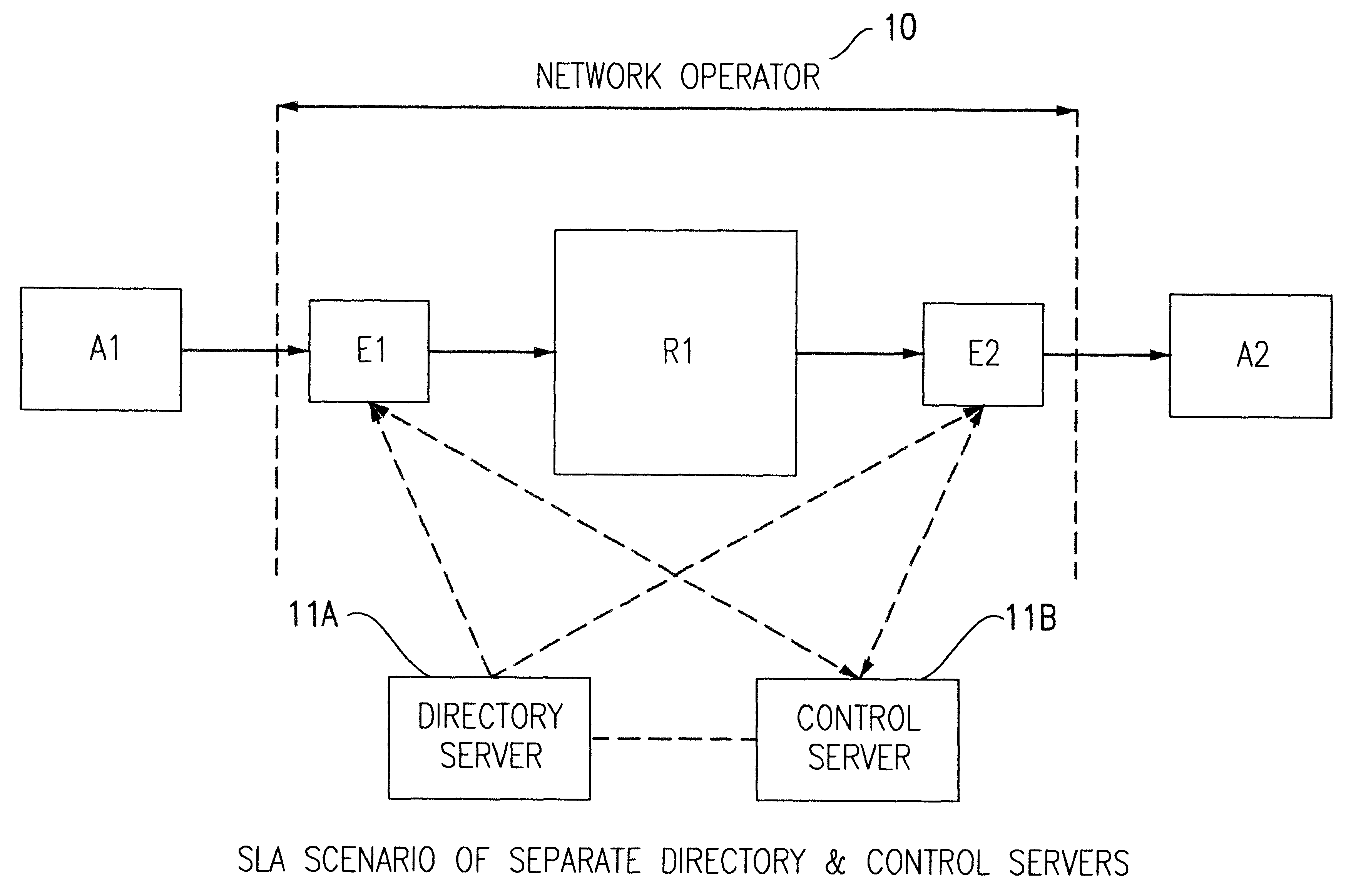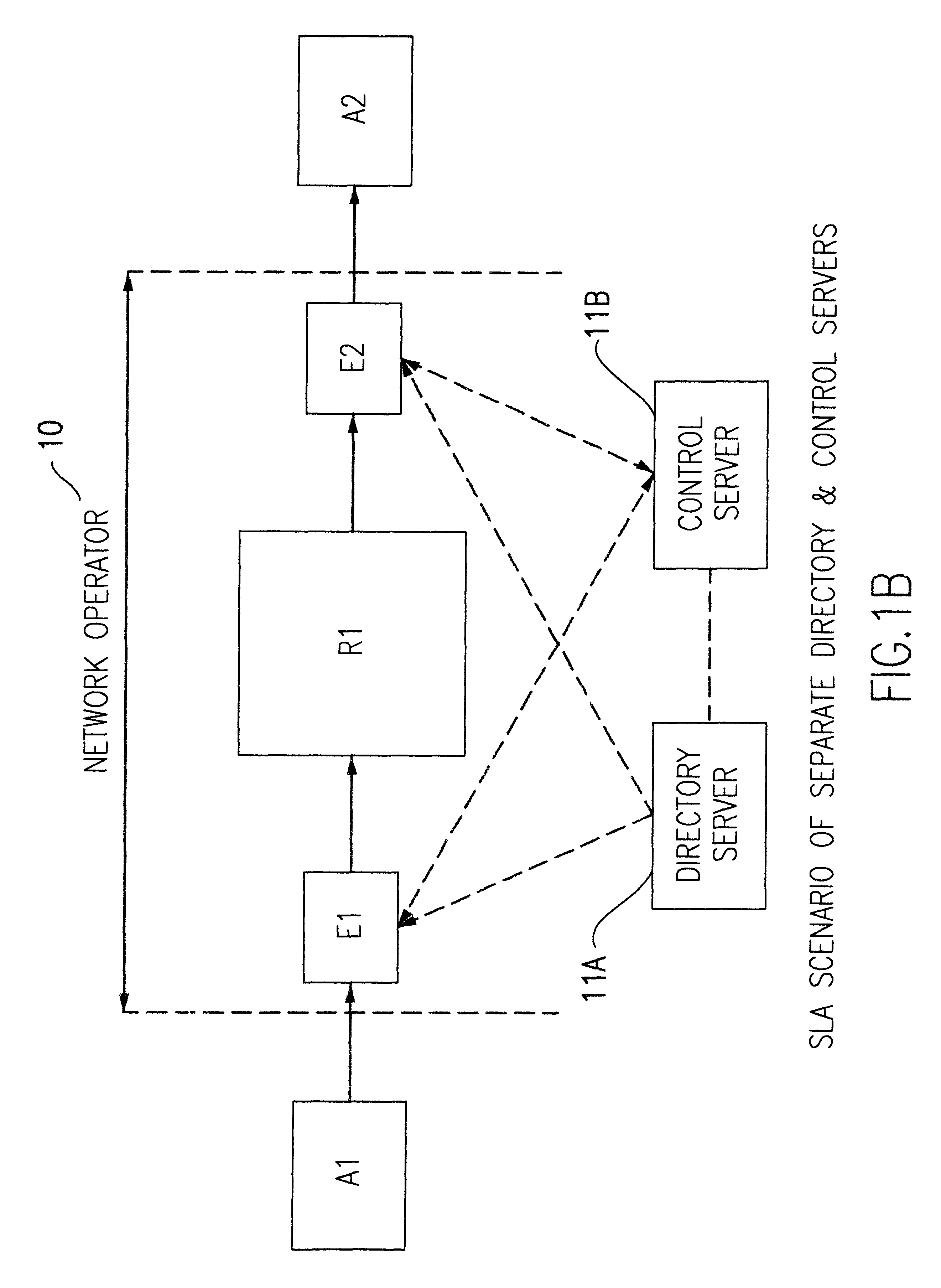Architecture for supporting service level agreements in an IP network
a technology of ip network and service level agreement, applied in the field of architectures for delivering internet protocol (ip) networking products, can solve problems such as time taken, inability to work, and exacerbated problems
- Summary
- Abstract
- Description
- Claims
- Application Information
AI Technical Summary
Benefits of technology
Problems solved by technology
Method used
Image
Examples
Embodiment Construction
Referring now to the drawings, and more particularly to FIG. 1a, there is shown a Service Level Agreement scenario, with a Network Operator 10, Customer Premise Networks A1 and A2, Edge Devices E1 and E2, a Network Router R1 and a Directory Server / Control Server 11. FIG. 1b shows the same scenario, but with Directory Server 11A distinct from Control Server 11B.
The main components of the proposed architecture are: Edge Device(s), Control Server(s), Directory Server(s), Edge Device to Control Server Protocol, Edge Device to Directory Server Protocol, Control Server to Directory Server Protocol, and End Host Protocol.
These will now be discussed in detail.
An Edge Device in the SLA architecture is a module that interfaces a customer premise network with the backbone network. (Currently, backbone networks vary widely in their resource management and service differentiation capabilities (e.g. an IP network with support for resource reservation and / or support for differential services using...
PUM
 Login to View More
Login to View More Abstract
Description
Claims
Application Information
 Login to View More
Login to View More - R&D
- Intellectual Property
- Life Sciences
- Materials
- Tech Scout
- Unparalleled Data Quality
- Higher Quality Content
- 60% Fewer Hallucinations
Browse by: Latest US Patents, China's latest patents, Technical Efficacy Thesaurus, Application Domain, Technology Topic, Popular Technical Reports.
© 2025 PatSnap. All rights reserved.Legal|Privacy policy|Modern Slavery Act Transparency Statement|Sitemap|About US| Contact US: help@patsnap.com



